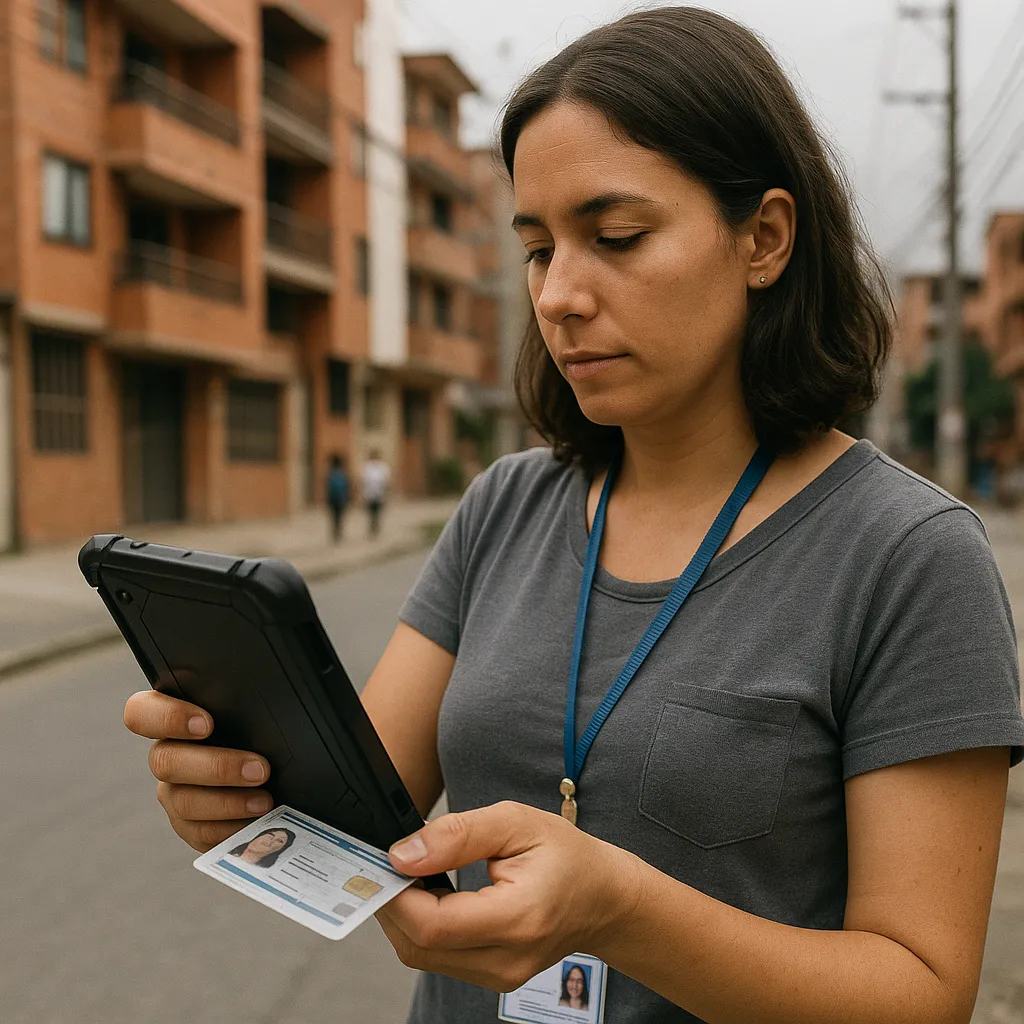Biometric Enrollment and Physical Enumeration Standards in Low-ID Contexts
Published on: Tue Jul 15 2025 by Ian Hawley & Charlie Goldsmith
Very busy people version:
- Cash assistance helps people greatly. To pay them responsibly, you need to know who they are. And, in practice, civil registration and national ID is foundational for many other helpful things
- Many countries across the Global South have comprehensive civil registries and/or national ID systems – and some have then built ‘social registries’ upon these that facilitate cash assistance in times of stress – like the current drought in Southern Africa
- Were these don’t yet exist, then some primary data collection is in order – and, in a number of places, being undertaken
- Registering ‘everyone’ is not a small undertaking; but neither need it be a terrifying and bottomless pit for money and personnel
- This blog sets out a basic approach, focused on the unit of production being the ‘enumeration’ – whether that be of an individual, or a household, that we have found helpful for working out how long such a ‘field exercise’ will take, how many people it will need, and what it might cost – and then managing it to conclusion
To know and to pay
A great and worthwhile development in the humanitarian and global development sector over the almost 20 years I have been in it has been the increased use of cash put directly into the hands, or wallets physical or digital, of recipients.
This has been both a conceptual development – gathering the evidence, and laying aside unjustified mistrust – and a practical one, that has involved significantly improved processes for enrolling, identifying, targeting and paying recipients.
Payment processes have been transformed by Mobile Money services available all across Africa (save, as sadly usual, Eritrea), and, in the last five years, by payment aggregators like MFS/Onafriq, CAB and now Chipper offering services so that the payer can, with one outbound interface, pay recipients across multiple countries, to the financial service providers they themselves have chosen.
Targeting processes, similarly, have seen immense ingenuity applied – targeting by geography, by characteristics, by proxy means tests of great, in some cases perhaps even excessive, ingenuity, by mapping who has what kind of roof, what light is seen from space, what kinds of international calls and remittances people get. Perhaps most elegant of all is ‘self-targeting’, in which potential recipients can reply to a few simple questions via USSD messaging, so as to determine eligibility.
Who are you?
All of these are excellent. But they also build on a fundamental layer of being able to identify individual people – the ‘long list’, if you will, from which a shorter list can then be built. This is not new news: a similar process is part of the Christmas story told by St Luke almost 2000 years ago.
Across much of the world, civil registration (of births, in the first place) and photographic and biometric passports and/or National ID provide this fundamental layer readily.
[There are, en passant, a range of systems that have been tested at scale in multiple countries to support this layer – including that built by NADRA (Pakistan’s National ID Agency, system also in use in Malawi and coming up in Somalia), and India’s MOSIP (in use in Ethiopia, Morocco ++, see here: https://www.biometricupdate.com/202403/ethiopia-morocco-philippines-explain-mosip-journeys-as-platform-registers-110m-digital-ids) – but this blog].
In some places, however, that is not the case.
Over the last almost 20 years I have designed and worked on various field exercises in Africa – for citizens in general, or for subsets of them – school pupils, public sector workforces.
Abyrint, my employers, and I, recently had the privilege of working:
- for a National Identification Authority that is embarked on its country’s first systematic registration and issuing of National ID
- on rapid scoping for a national drought response
Most of what is described here is footnotes and/or homage to this super essay
https://www.cgdev.org/sites/default/files/malawi-journey-towards-transformation.pdf by Tariq Malik, former boss of NADRA, the Pakistan ID agency, about delivering the National ID process in Malawi: he and NADRA are now the go-to experts for much of the Global South. The moral to the physical is as at least three to one, and what he says about selecting, managing and motivating enumerators, who are literally the ‘shop window’ of the government and/or organisation they represent, is specifically worth reading.
Some of the approaches are also relevant to ‘field exercises’ (all terms sic) more generally – payroll censuses, school and health facility inspections, and really any exercise that involves going in person to find things out.
Field sports
When you are planning and managing such a field exercise, the unit of production is the ‘enumeration’ – whether that be of an individual, or a household.
At its simplest, the enumeration production function is about working out the resources and time that will be needed for the total number of enumerations you think you will need to conduct.
A simple way to think about this is to consider:
- How many minutes one enumeration can, on average, be expected to take
- How much of a day, on average, an enumerator will actually be enumerating:
- if you are in a town enumerating people coming in to an office, or working through a high density residential area, this might be quite a high proportion
- if you are enumerating in places that are bushier, and/or remote and/or in rough terrain, your enumerators may be bumping about all day on boda or even donkey (as my South Sudanese colleagues did on a job for Government of Lesotho some years ago) to get one or two enumerations ‘in the can’
Material to that estimate is whether the enumerator goes to the enumerated, or vice versa. The advantage of going to the people to be enumerated is the extra assurance you get from meeting people at their home or workplace (particularly important for reducing the risk of enumerating ‘ghost workers’), as the case may be – and of course minimising the inconvenience you put them to.
Then you work from that to estimate how many person days the process will take, and, based on a cost per person day, how much the process will cost. If there is going to be any re-enumeration for cross-checking or moderation, remember to build that in.
As a starting point for costing, you can just think about the direct costs per person day in terms of their remuneration and any daily allowance for travel, accommodation and subsistence.
A decision that has fairly material cost implications is about who can enumerate where. In some places and cases, local acceptability is the priority, and you want enumerators from the local community – who’ll be able to sleep in their own beds at night. In other places and cases, people may have more confidence in the process if they are being enumerated by someone who’s not from round there – who will need accommodation.
You will also need to think about the arrangements for people who miss enumeration for a good reason – can they come to a ‘mop-up’ in the local town? Is there any extra assurance you will need on them?
Then you can add in the other costs – training the enumerators, public comms beforehand, setting up the app and database, devices, printing if any, comms for the team, the central team running the operation and responding to problems, transport, security arrangements if needed.
When you do that, you can also have a think about how fast you want to run the exercise: faster means more enumerators to train, but can be more efficient on central operations management, and can help with keeping up the momentum on public communications. Also, clearly, sometimes you are doing this exercise as a response to circumstances, and need to go fast so as to be able to help the people enumerated.
The little table below puts the words above into a set of calculations.
A markdown table of the image provided would be:
| 1 | 2 | 3 | 4 | |
|---|---|---|---|---|
| A | ||||
| B | ||||
| C | ||||
| D | ||||
| E | ||||
| F |
Envoi
In a world where more people have National ID, and there are more means to get, and collate, assurance digitally, there should in principle be less need for ‘field exercises’ to identify and validate people.
But, selection effect and all that, the ones that are still needed will skew to more complex contexts; hopefully having some basic ‘fieldcraft’ like this written down will be helpful in conceiving, planning and running them.



